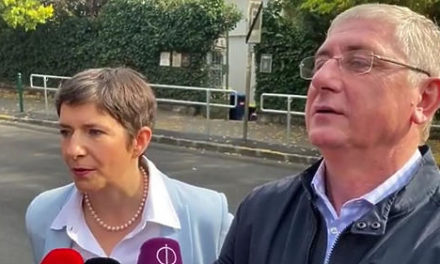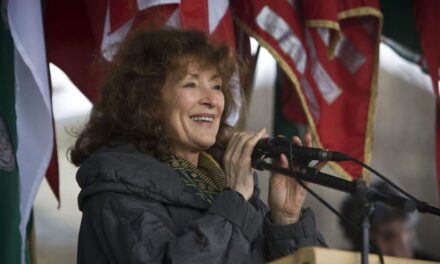"It is necessary to create an environment where the child can let his imagination run free, be it at home, in kindergarten, at school, or at a concert," says Klára Korzenszky, singer and child psychologist, who uses the "healing" fairy tale in both of her professions. strength".
This is also the reason for the popularity of the folktale band Klárisok, which has now produced a new video clip for Folklore Day with the participation of Ildikó Boldizsár. The folk tale, the fairy tale, which is spoken in the language of children, and thus reaches them even in our noisy and fast-paced world, helps to immerse oneself, to deal with fears and problems. That is why it is extremely important that this treasure of ours, which connects us with our ancestors, grandparents, and the next generation, is not lost.
Singing, singing together and dancing - from a biological, psychological and social point of view - are a necessity. We don't sing much though - we consume music more like a service. The tales woven together from our folk songs by the Kláris band can give back and pass on the joy of singing together and playing together to the participants during the interactive concerts.
Ildikó Boldizsár has been working successfully for decades to "give back" the fairy tale to adults, so that they can find their way back to the clues that have been available for thousands of years. With the help of the yarn they pick up again and pass on, children and young people can then gain vital knowledge that makes it easier to navigate the external and internal worlds.
"When you enter the gate, a magic thread shows you the way - you just have to pick it up and follow it. Under the old walnut tree, sitting on the bench, Ildikó is patiently spinning balls. Turn, turn, turn, turn, turn, turn. In front of him in the basket are countless colorful balls...
In every culture, the thread is a symbol of guidance, the path to be followed. It symbolizes the knowledge that helps us navigate the phenomena of life and the world. For centuries, generations have considered it their task to take this important knowledge and pass it on, either verbally or through behavioral patterns.
However, in our chaotic and fragmented world, the transfer of resources between generations is no longer so clear: it is often difficult or even stuck. Does the older generation still have any valid knowledge - a sure thread - that they can pass on, or absolutely want to pass on to the next generation? And do the following generations have the skills to accept and pass on what has been handed down?
Where does Ildikó's colorful yarn lead? (In other words, what is the valid knowledge he proposes to pass on?) To the world of fairy tales, which still offers a complex body of knowledge that spans generations and is eternally valid. After all, our fairy tales - and folk songs - crystallized over thousands of years have remained with us in order to preserve the basic models and patterns of the behavior of human existence and to serve as a handhold and a guide for people throughout life."
We can meet the Klárisok fairy tale band next at the series of events organized on the 10th anniversary of the Fairy Tale Museum, where Ildikó Boldizsár will also be there with a performance.
Source: vasarnap.hu
Featured image: YouTube












